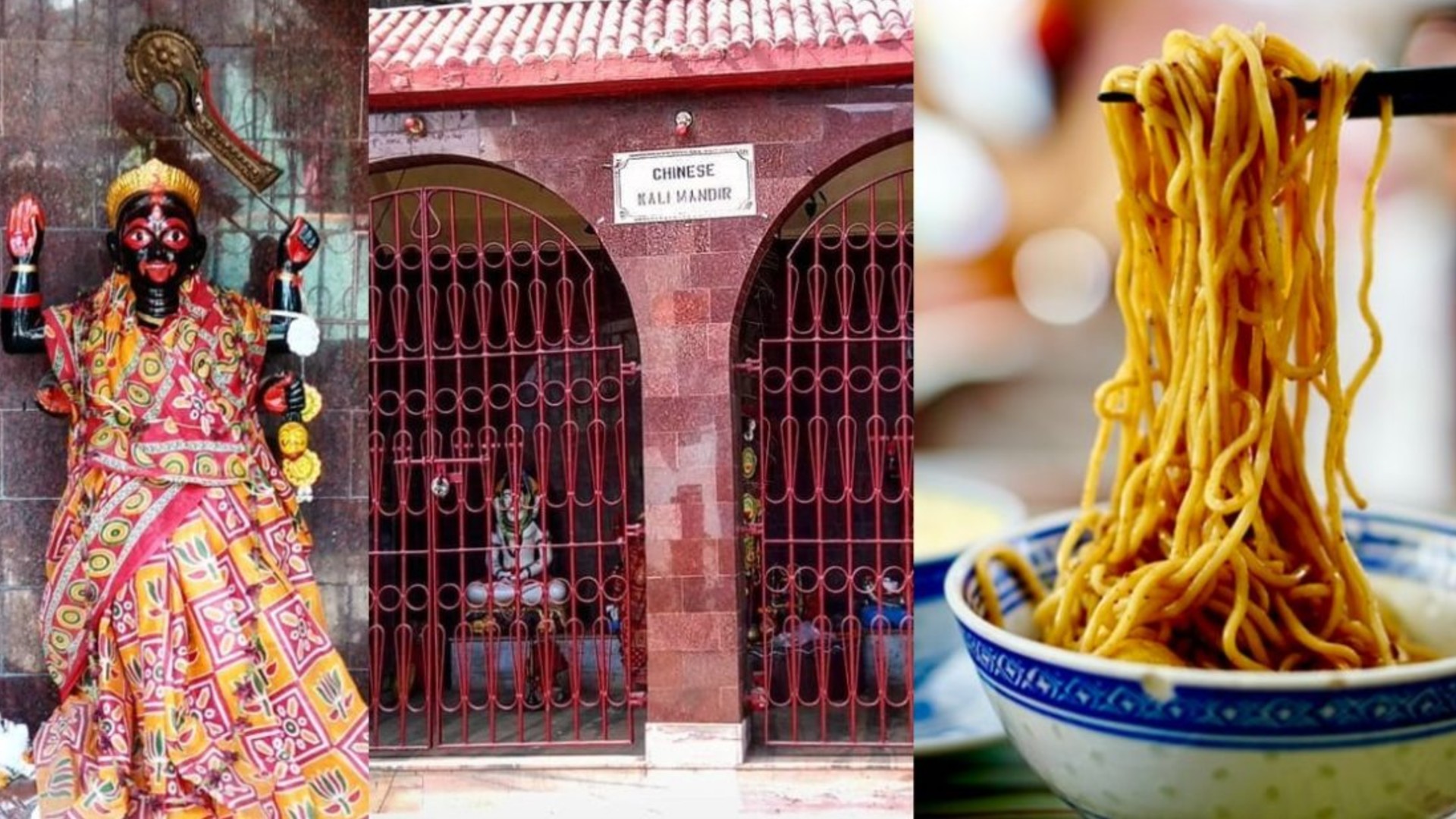The only Chinese settlement in India, commonly known as China Town, is located in Kolkata’s Tangra area. This ancient Tibetian-style lane blends the cultures of old Kolkata and East Asia beautifully. The same can be seen in the Chinese Kali Temple. Temple culture is a beautiful fusion of Bengali and Chinese traditions. The fascinating aspect of this temple is that noodles, chop suey, rice, and vegetable dishes are offered as prasad to Goddess Kali. While a Bengali priest worships the Goddess, handmade papers are burnt here to keep evil spirits at bay. Tall candles are lit here during Diwali with Chinese incense sticks. Therefore, this temple has a distinct aroma from other Hindu temples.
How Did The Temple Come Into Existence?
About two decades ago, Chinese and Bengali people donated to create the Chinese Kali Temple in Tangra. Hindus worshiped two granite stones smeared with vermilion underneath a tree for more than 60 years before the temple was built. A 10-year-old Chinese boy fell ill, and no treatment worked for him. His parents prayed for several nights under the tree, losing hope. The boy miraculously recovered, and the spiritual site became an important part of the Chinese and Hindu communities.
Pranam At This Temple Is Done In Chinese Style
When you visit the temple, you’ll see Chinese folks taking off their shoes, entering the temple and praying to the Goddess. They also do the pranayam in the Chinese way. While the granite-walled temple isn’t much ornamented, its rituals are profoundly striking. The historic alleys of Kolkata are home to a few other Chinese temples, many of which are referred to as churches. Some prominent Chinese temples in Kolkata include Sea Ip Church, Toong On Church, Sea Voi Yune Leong Futh Church, Gee Hing Church, Choong Yee Thong Church and Nam Soon Church. So, the next time you visit the city of joy, don’t forget to pay a visit to these unique temples.
